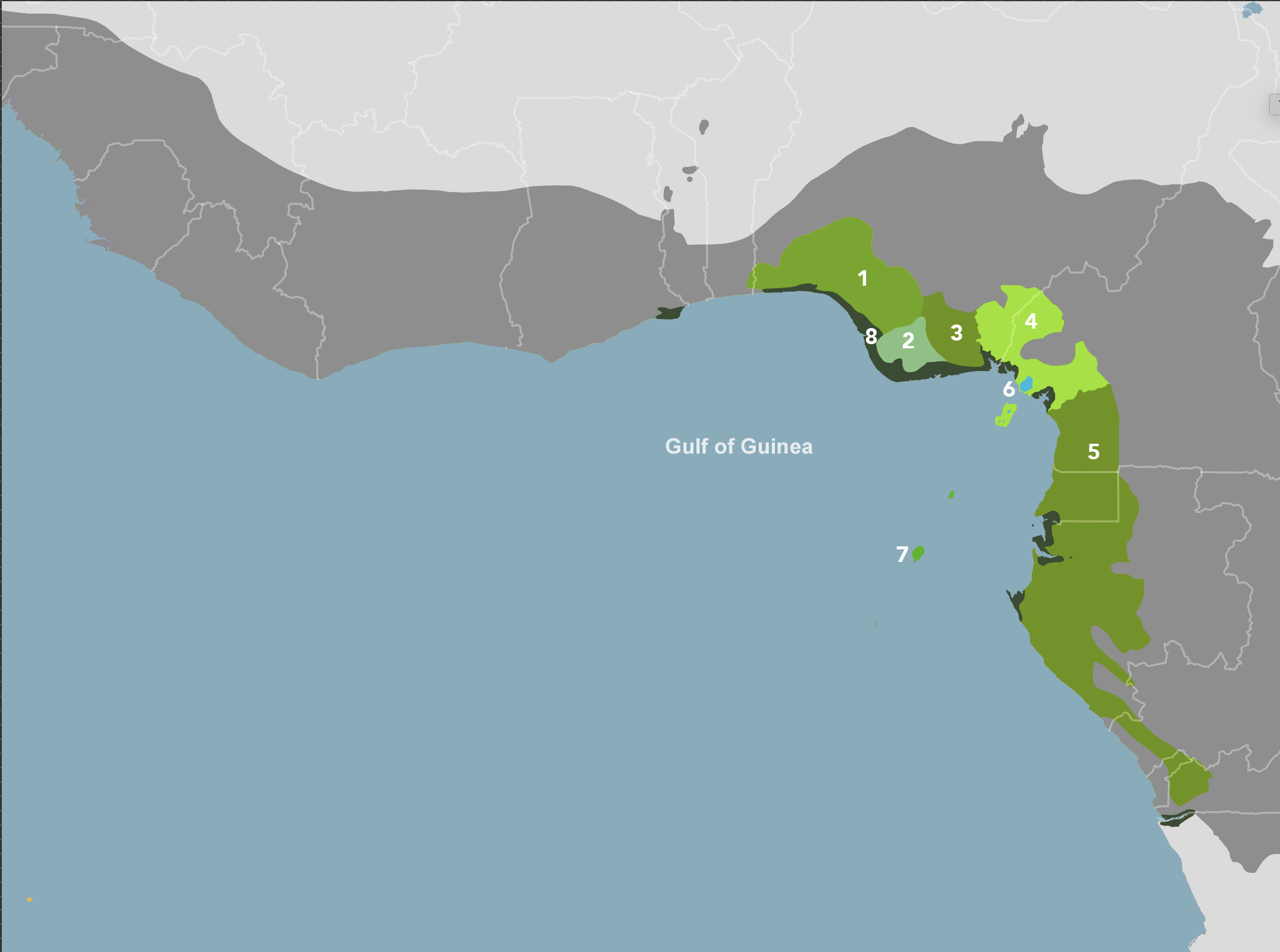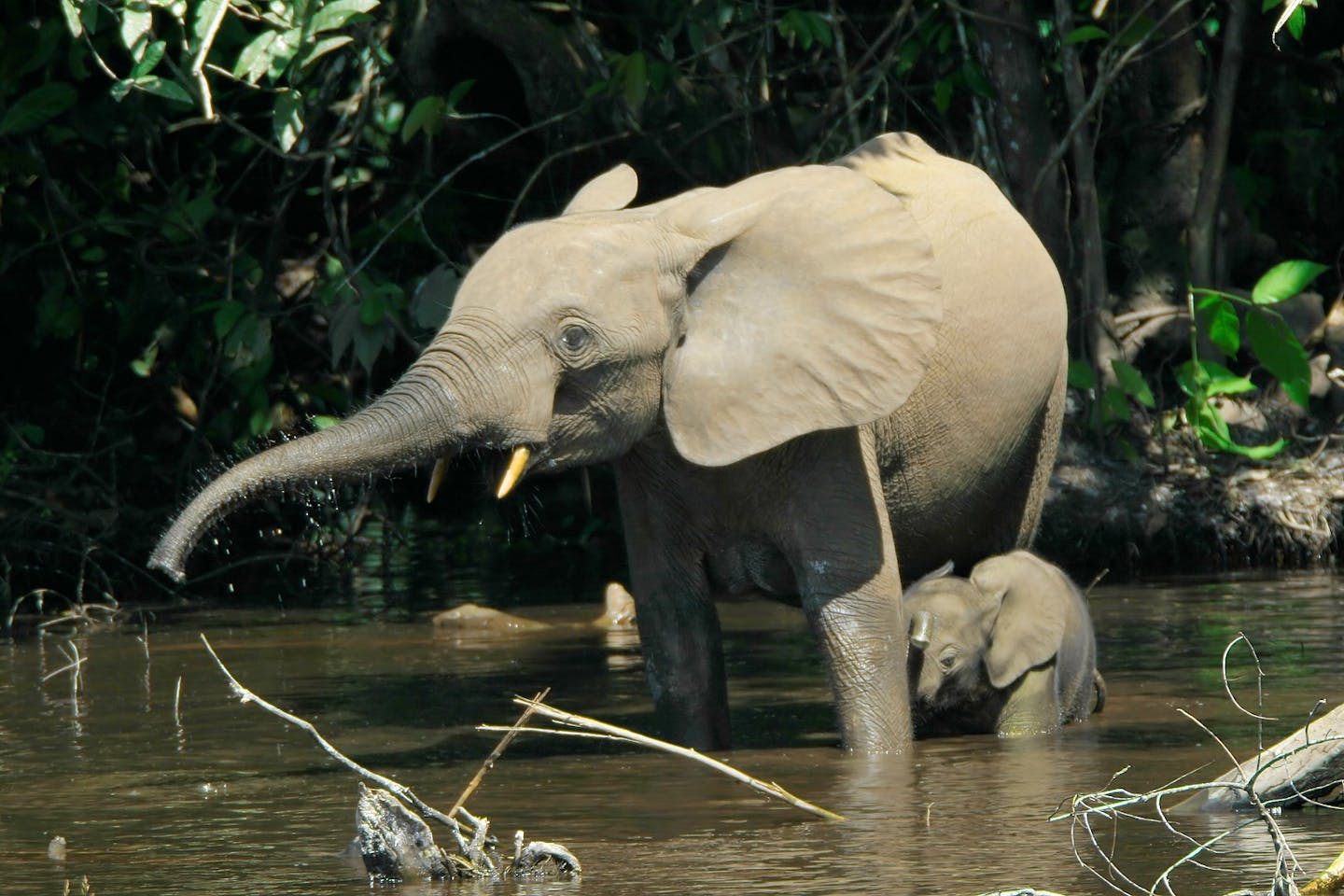Gardeners of the Congo: how African elephants fight climate change
- Nature Conservation
- Land Conservation
- Iconic Species
- Wildlife
- Mammals
- Mammal Assemblages
- Equatorial Afrotropics
- Afrotropics Realm
Most are aware of two species of elephant, African and Asian, learning in school to differentiate by ear size. However, on March 25th, 2021, the International Union for Conservation of Nature (IUCN) announced that it now recognizes two distinct species of African elephants: the savanna elephant and the forest elephant. African forest elephants may be the smallest of the three species. Still, recent research shows they may provide an enormous service in aiding the fight against climate change by helping to sequester carbon at substantial levels. Enough so that economist Ralph Chami has valued their greenhouse gas capture services at $150 billion.
African forest elephants live in the humid, tropical forests of the Congo Basin and throughout West Africa. Feeding on lush leaves, seeds, fruit, and tree bark, they forage the jungle for food. Dubbed ‘Gardeners of the Congo,’ these elephants consume mass amounts of vegetation and plant material, stomping on small trees and bushes as they move from location to location. Thanks to the appetite of the elephants, the thinning of the surrounding vegetation give the trees left standing better access to water and light. This leads to taller and larger "late-succession" trees in the rainforest, which store more carbon per volume in their biomass. Thus, forest elephants act as environmental engineers, increasing the amount of carbon stored by trees through foraging and creating an environment where larger trees can prosper.

The African forest elephant is the Iconic Species of the Gulf Of Guinea Coastal Forests & Mangroves Bioregion (AT17)
Co-authoring the article The Secret Work of Elephants, Chami celebrates these elephants as “environmental engineers” and focuses on clearly explaining the economic value they provide by simply existing. Putting a price on nature is a heavily debated topic, but as more money is beginning to be invested in innovative carbon capture technology, Chami and his team believe that it is vital to show the value nature is already providing us. What they found was that each elephant captured 2.64 metric tons of carbon dioxide in its lifetime. If a machine of the same caliber was to be created and implemented, that service would be worth more than $1.75 million. Chami said, “Once we put [African forest elephants] in monetary terms, you can start to build a case around how to help protect and grow the elephant population that's being decimated.”
Illegal poaching has reduced elephant populations by 90 percent in the past century. It is estimated by biologists that if African forest elephants returned to their former numbers before human industrialization, carbon capture would increase by 13 metric tons. Rather than relying on new and unproven “silver bullet” carbon capture technologies to slow global temperatures rise, researchers, conservationists, and now economists alike are advocating for natural climate solutions provided by species like the African forest elephant. As Chami proclaims,
Learn more about valuing the carbon services of wildlife


